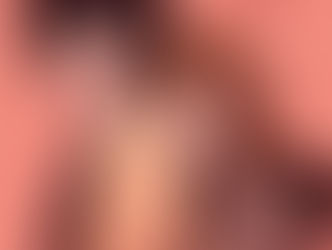

Horimiya Anime Review
Horimiya is an Anime based on a web comic beloved by many and there's a good chance you will too. The art looks really great in this...


11 Best Anime to Watch Right Now
I’ve recently written about some good animes to watch right now and the best anime on Netflix. This time, I’ll provide you with a list of...


When Marnie Was There: Anime Movie Review
Are you having a hard time finding that perfect Anime Movie and have to keep looking for another ghibli movie to watch? Maybe this movie...


Japanese Anime vs. Chinese Anime: Can you spot the difference?
There are many anime shows and movies that we can watch on different streaming platforms like Netflix, Crunchyroll and Hulu. All of the...


Ponyo Anime Review
Are you looking for a movie to watch with your family, especially your younger siblings? I’m pretty sure this movie will be perfect for...


Anime Streams are very popular: Why you might like them (Twitch and TikTok)
The anime community is continuously growing until now and one of the reasons why many people like watching anime is because of the...


What is Anime Girl Aesthetic?
Anime is known to have a lot of aesthetically pleasing characters and it can just grab anyone’s attention even if they aren’t actually...


What is Anime PFP?
Q: What is Anime PFP? A: Anime Profile Picture. Our profile picture can really tell something about ourselves and the things that we...


Yuri on Ice (2016) Anime Review | Watch this Anime Free
Ever felt so hopeless for being not good enough? That’s what Yuri felt when he lost his final figure skating competition, the Grand Prix...


Anime Definition: Is it a Cartoon or is it an Animation?
As the years pass by anime movies and series have a continuous growth of popularity and many generations, especially the younger ones...


What is Anime Season? When do Artists release new anime?
Ah, that fresh feeling of cracking open an Ice cold Preview from your favorite animation studio, your eyes drinking it all in. Each year,...


Can you Cosplay in Japan?
The word cosplay is one of the trendy topics especially when you’re in an anime group on social media, every scroll that you’ll do you...


Wixoss Anime English Trading Card Game: What is it + How to Play!
I lived in Japan briefly in 2016 and fell in love with Wixoss Trading Cards. While visiting Akihabara with shops like Hobby Japan,...


Kaguya Sama Love is War Anime Review & Resena en Espanol
Kaguya Sama love is war is an anime that really touched my heart. My cold dead unfeeling heart that is only filled with ecchi and sword...


What is the Most Popular Anime? (Big 3 Updated for 2022!)
The new big 3 anime have been decided by fans across the globe! It has been YEARS since the Big 3 Anime have changed and I couldn't be...


What is Anime? Many Adults are Learning That They Also Enjoy Anime
Different kinds of anime series and films have been released for years and it became a sort of entertainment and comfort for the people...


5 Pretty Anime Girls with Black Hair
One of the best things in anime are the pretty anime girls in it. They are probably one of the reasons why animes are a big hit. Pretty...


My Dress Up Darling Anime Review
My Dress Up Darling is one of the Hottest New Anime of 2022. Fans are erupting all about Kitagawa Marin as the Number 1 Anime Girl Waifu,...


Is MyAnimeList Legit?
Looking for the perfect anime site to watch your favourite anime shows could be really exasperating. Especially if you’re really into one...


7 Anime Characters That Just Don't Make Sense
Some Anime Characters really have great design, Character development, witting lines, or amazing powers. This list doesn't include any of...


What Are The Best Anime On Netflix?
Netflix definitely has some Bops and some fails. We've seen epic works like Violet Evergarden, Your Name, Kakegurui, A Silent Voice,...


Tokyo Revengers Review | Primera Temporada Reseña en Español
Tokyo Revengers is one of the new hot Anime that everyone is talking about and watching. It's about a delinquent who gets another shot at...


I Fell In Love With My Tutor And Woke Up In A Strategy Game Review
If you like light novels and Isekai, this might be a find for you! I was browsing the Kindle Vella section and came upon a brand new...


Top 5 Anime Games for PC
We’ve all had our fair share of wanting to be a part of our favorite anime shows. But as much as we want to, that cannot happen. Wait! It...


The Girl Who Leapt Through Time Anime Movie Review
If you're looking for a cute love story with emotional lessons, this slice of life Anime checks all the boxes. I don't know if I'm just...










etc mining etc mining
etc mining etc mining
etc mining etc mining
etc mining etc mining
etc mining etc mining
etc mining etc mining
etc mining etc mining
etc mining etc mining
etc mining etc mining
etc mining etc mining
etc mining etc mining
etc mining etc mining
etc mining etc mining
etc mining etc mining
etc mining etc mining
etc mining etc mining
etc mining etc mining
etc mining etc mining
etc mining etc mining
etc mining etc mining
etc mining etc mining
etc mining etc mining
etc mining etc mining
etc mining etc mining
etc mining etc mining
etc mining etc mining
etc mining etc mining
etc mining etc mining
etc mining etc mining
etc mining etc mining
etc mining etc mining
etc mining etc mining
etc mining etc mining
etc mining etc mining
etc mining etc mining